Natural bounties from beautiful sceneries
Rich bounties of beautiful nature had been a source of nourishment for people living in Miyama for long time. Edible plants and flowers growing in valleys and forests, buckwheat and millet grown in the fields, Ayu (sweetfish) from clear Yura river … they are not only tasty but also seem to purify our bodies.
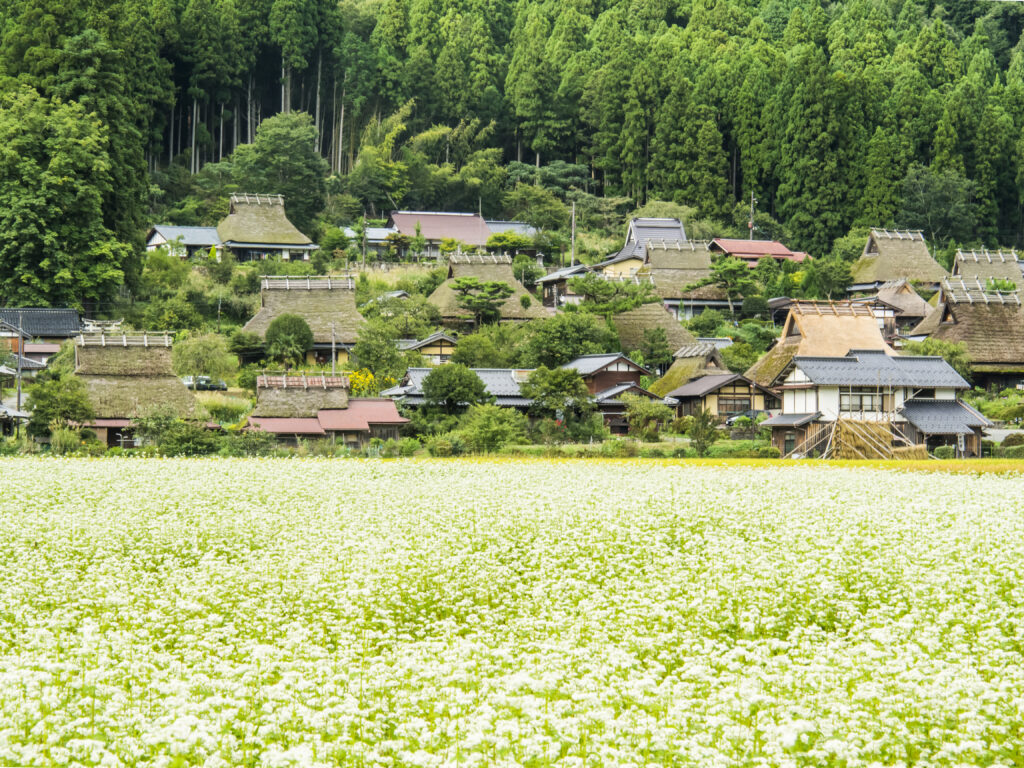
Miyama Herbal Tea
A wide variety of wild herbs and other edible plants and flowers grow in the valleys and forests of Miyama. Local people have foraged these plants for generations, using them in food and drink. One such beverage is Miyama herbal tea, blended and brewed by a group of residents and served to visitors at the Miyama Folklore Museum.
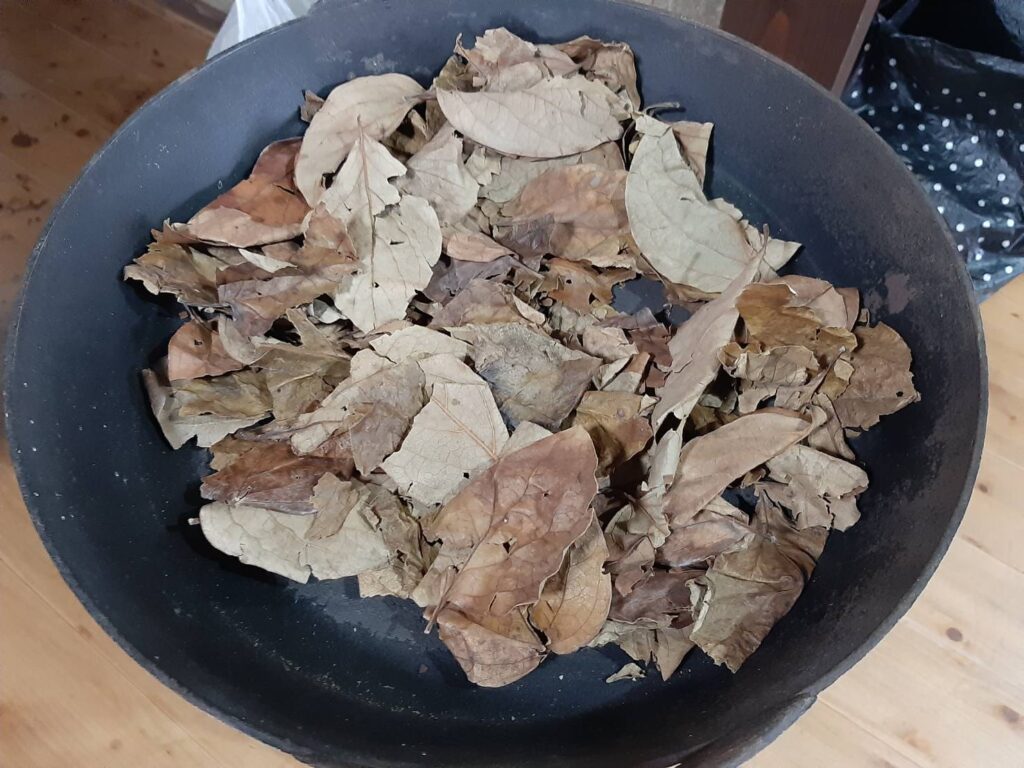
Herbs traditionally used in the area include horsetail grass, which has diuretic properties; persimmon leaves, known to aid digestion; and mulberry leaves, which are rich in minerals and are said to be good for the liver. In Miyama herbal tea, horsetail grass and persimmon leaves are mixed with tea leaves, obako (Plantago asiatica) leaves, ruscus bamboo, mugwort, and dokudami (Houttuynia cordata), a herb with white flowers that spreads quickly and is considered a nuisance by gardeners but has long been cherished for its purported healing properties.
To make the tea, the herbs are dried in the sun, crushed, roasted in an iron pot, and then steeped in hot or cold water. Bags of dried, roasted tea herbs can be purchased at the souvenir shop by the entrance to the Kayabuki no Sato village of thatched-roof houses and in the Miyama Folklore Museum.
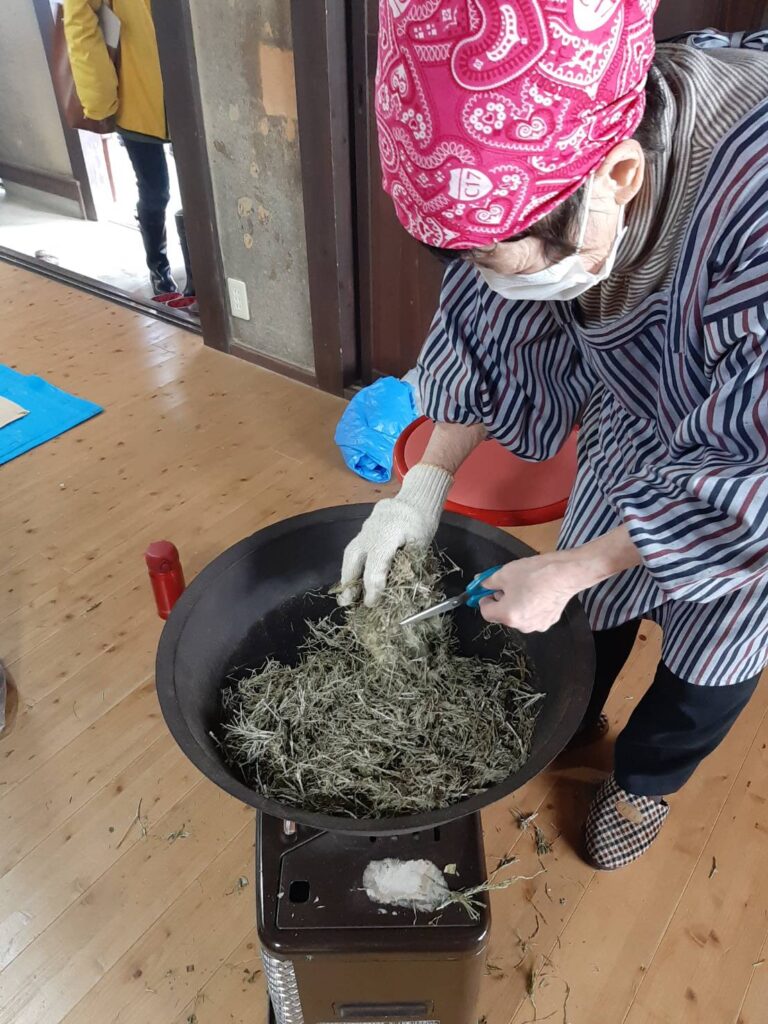
Miyama Soba and Millet
Soba (buckwheat) is a staple of Miyama’s cuisine and an eye-catching feature of the local landscape. It is a hardy plant that requires relatively little tending and is grown as a supplementary crop along the sides of rice paddies. In Miyama, soba began to play a central role in the late twentieth century when depopulation led to more and more rice fields being left unused. Soba grows densely and produces beautiful white flowers, and local farmers initially planted it in some of the vacant fields in the hope of making the scenery more attractive.
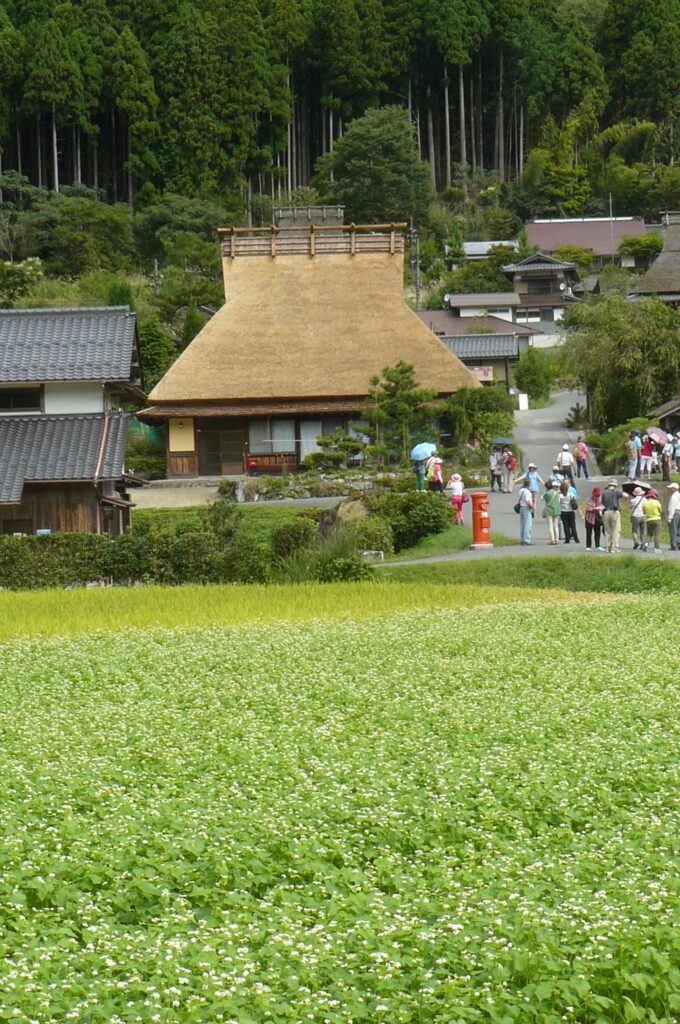
Miyama soba became noted for its taste as well as its beauty and is now considered a local delicacy. The Kitamura restaurant by the entrance to the Kayabuki no Sato village of thatched-roof houses serves hand-cut noodles made with soba from the surrounding fields. Seed is sown in early August when the area’s rice farmers have some spare time before harvest season, and the fields are covered with a carpet of white flowers from mid-September. During the blooming season, photographers flock to Miyama to participate in the town’s soba fields photo contest. Following the harvest in October, the year’s new soba goes on sale in November.
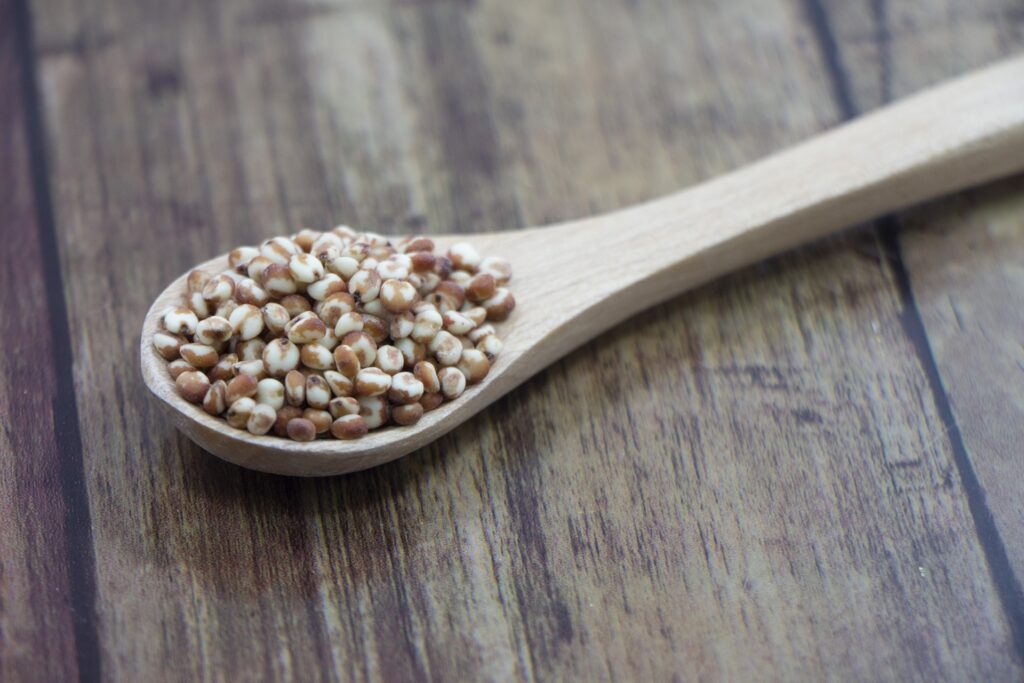
Proso millet (kibi) is another grain that was traditionally grown in Miyama as a complement to rice and still appears on local menus. It requires less water to grow than rice and was often mixed with the staple grain to add volume to a meal. Modern uses include blending millet flour with soft, sticky rice to make kibimochi, a mildly sweet confection available at local cafes and shops.
Ayu
Ayu (sweetfish) is a prized catch and an important part of the traditional diet in Miyama. Ayu is valued for its sweet and succulent taste and fragrant aroma and is usually either simmered in soy and sugar (kanroni) or lightly salted and grilled (shioyaki). The small fish thrive in Miyama’s Yura River, as they feed on algae that only grow in unpolluted waters.
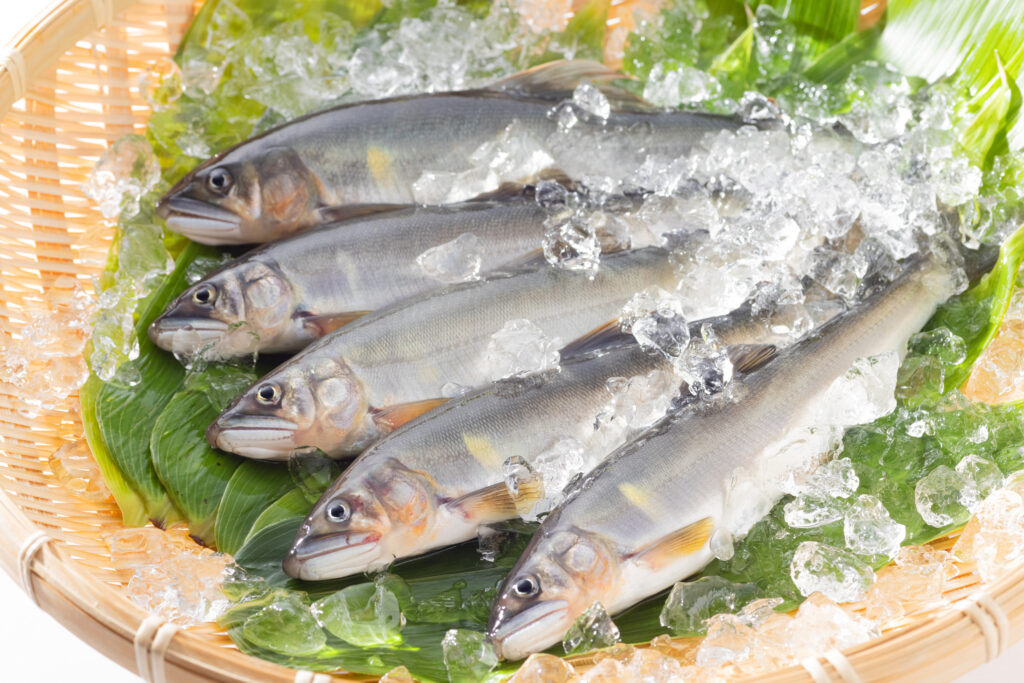
Ayu (sweetfish) is a prized catch and an important part of the traditional diet in Miyama. Ayu is valued for its sweet and succulent taste and fragrant aroma and is usually either simmered in soy and sugar (kanroni) or lightly salted and grilled (shioyaki). The small fish thrive in Miyama’s Yura River, as they feed on algae that only grow in unpolluted waters.
In the past, ayu hatched in the upper reaches of the Yura River in autumn, migrated downstream to the warmer waters of Wakasa Bay in the Sea of Japan to mature, and then returned to the river in spring to lay their eggs. However, the damming of the river has disrupted this cycle, and the river is now artificially replenished with juvenile ayu every year. Fishing season is in summer when the riverbanks of Miyama are busy with enthusiasts from both near and far.
The most common method of catching ayu in the area is called tomozuri. A live ayu is attached to the line of a rod and released into the water as a decoy. Ayu are territorial and instinctually attack any intruder that might steal from their food supply. When larger ayu in the river swarm the fisher’s decoy, several can be caught at once with a net.
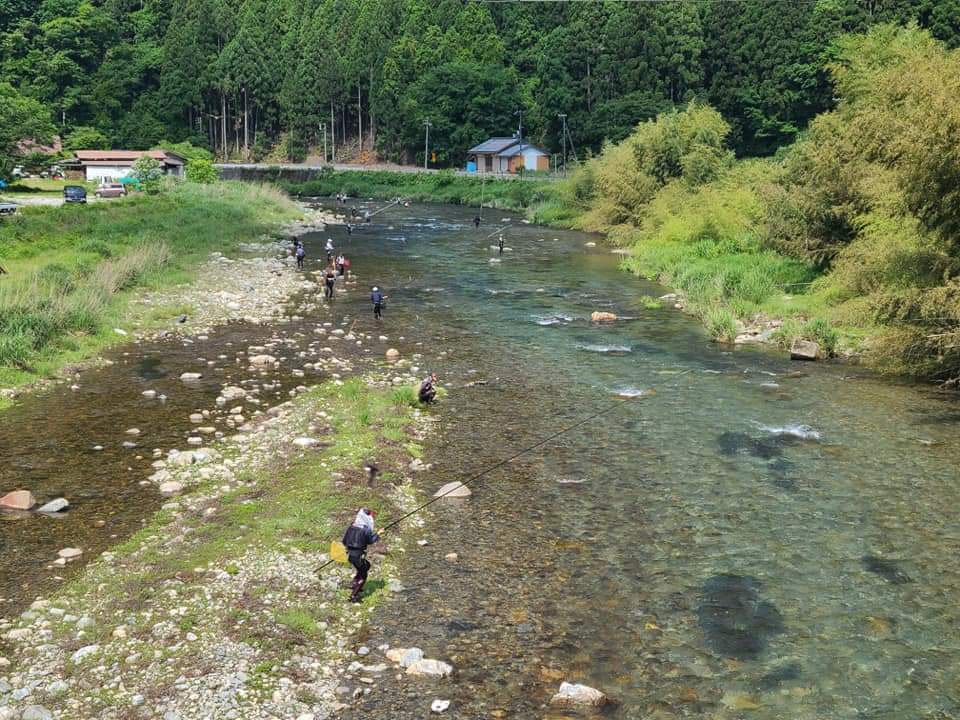
Ayu fishing is strictly regulated. Prospective anglers must have a pass that can be purchased at the Miyama Town Fishery Union Office and costs 3,600 yen per day or 13,800 yen per year. The Fishery Union offers fishing classes for beginners.

